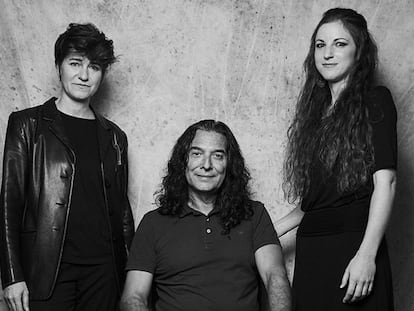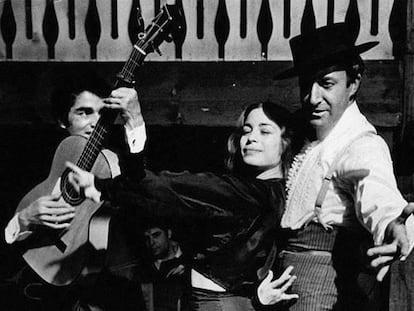María Moreno: the art of deconstructing flamenco
The young sensation worked for two months in Japan to raise money for a show that wowed the crowds at the Seville Biennale
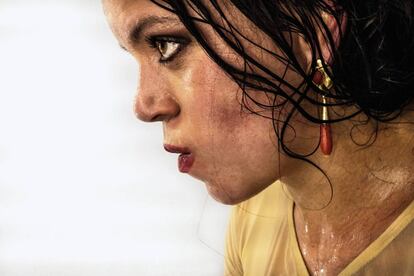
María Moreno, 33, has illuminated the flamenco dance scene with a light of her own, yet the only thing she notices is the glow of other artists that she herself loves and admires. Anybody else might be feeling overwhelmed by her recent success – best new artist at the 2017 Jerez Festival for Alas del recuerdo; an award at the 2018 Seville Biennale for De la concepción.
But Moreno only wants to talk about her gratitude for the dancer and choreographer Eva Yerbabuena, about the originality of Andrés Marín, and about everything she’s learned from watching Rocío Molina, Soraya Clavijo and Israel Galván.
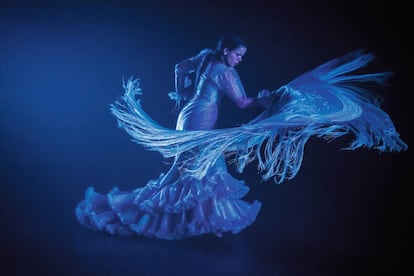
But her greatest praise is reserved for her own contemporaries in the world of dance. If there is something that defines the new batch of flamenco artists, it is this show of generosity, the way they enjoy one another’s successes. María Moreno is herself an extraordinary dancer, but the choreographies of her friendship are as daring as those of her flamenco dresses.
That’s despite the fact that the competition out there is tough these days. Moreno remembers starting out with the corps de ballet at Eva Yerbabuena’s dance company at the turn of the 21st century. She was barely 17 then and her mates on the stage included Asunción Pérez, La Choni, Mercedes de Córdoba, Sonia Poveda, Amador Rojas, Edu Guerrero, Luismi González and Antonio Molina El Choro, all of whom went on to become consolidated professionals.
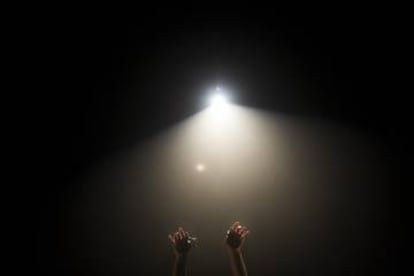
“They were all really good!” exclaims Moreno, her eyes open wide. It is ultimately this reporter who feels obliged to note that her own career has been at least as stunning, if not more so.
María Moreno began training at the conservatory in Cádiz, where she earned an intermediate degree in Spanish Classical Dance. Later she spent a few formative years at Yerbabuena’s company, and took classes from the masters on specific issues that she needed to perfect in order to grow as an artist. She also performed at tablaos, where she reinforced her understanding of the dance.
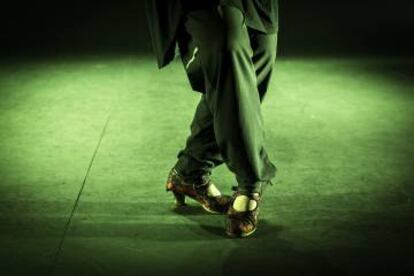
By watching, learning and experimenting, she discovered the value of fragments, those “little crumbs” that could never constitute an entire dance by themselves, but which are used as the building blocks for any choreography.
She started to apply this tool to her own creations and to her classes. Moreno was convinced that a dance did not always have to be taught from beginning to end, but with the various elements that make up the whole. She worked for two months at a tablao in Japan to save enough money to fund her latest show, and she enjoyed teaching the best of Japan’s bailaoras, whom she describes enthusiastically as “phenomenal, real dancing machines.”

It was also there that she realized that it really didn’t make sense to teach entire choreographies that her students would not be able to replicate later. She wanted to teach something that did not depend on recorded music or even on live accompaniment, and her intuition told her that she could achieve this through fragments – in other words, through deconstructed dance.
And so, even though Moreno gets teaching requests from beginners as well as professionals, her most grateful students are those who already have a strong background in dance, because they are better able to appreciate the treasure they are receiving from her: a constellation of remates, marcajes and escobillas, the resources that any professional dancer must have to create her own work.
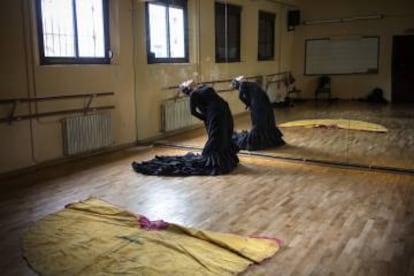
María Moreno uses cooking as a simile for these tools, saying that they are like the sauces, dressings and broths that serve as the foundation for many dishes. Similarly, she teaches moves that can be used both in a soleá or a mirabrás, others that go well in a guajira or petenera, and yet others that are useful in a flamenco tango or a farruca, all of which are different palos within the flamenco family, with varying rhythms and modes.
To Moreno, dances can be broken up not so much into steps as into pieces of a puzzle that may be used to build different puzzles. This requires a familiarity with the function, versatility and possibilities of each one of the pieces. It is not unlike the technique used in creative writing workshops, and Moreno is, in fact, working on a book. For over a year, she has been partnering with the photographer Susana Girón on a book that seeks to document the process behind show production, and to reflect on the process of artistic creation in flamenco dance.
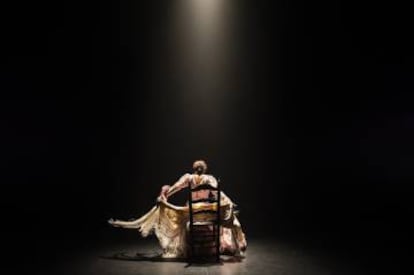
If the avant-garde flamenco dancer Vicente Escudero wrote Mi baile (My Dance, 1947) and Pintura que baila (The Dancing Painting, 1950) to explore cubism and explain himself through images, Moreno is boldly walking down the same road, exploring new forms of expression in her quest to share the most secret fragments of her own creative process. If we already knew that she dances as though she were writing, now we know that she also writes while dancing.
Oscar Wilde used to say that literary criticism is the best way to write an autobiography, and that is what makes Moreno special: the way she would rather talk about other people’s talent than about her own. This new star in today’s fertile flamenco territory is also bold because she chooses to be generous and grateful, and because through the fragments that she deconstructs, we ourselves are able to piece together the puzzles of her dance, her classes and her projects. María Moreno is bold because she is happy populating other people’s talent with her beneficent presence.
English version by Susana Urra.
